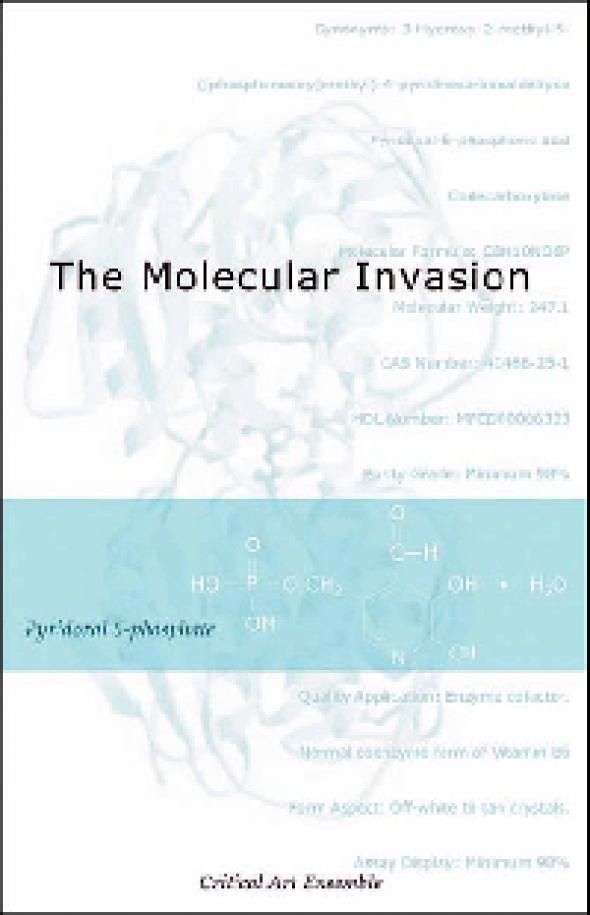Molecular Invasion
Molecular Invasion follows up the thesis advanced in Critical Art Ensemble’s previous Autonomedia booklet, The Flesh Machine. A collective of artists/activists, CAE owe their early reputation mainly to their work on electronic civil disobedience and electronic disturbance. The group’s take on theory and the politics of technoscience has always been preeminently pragmatic and action oriented, rooted in a tradition of street activism and situationist performance in public spaces – virtual and actual.In The Flesh Machine, CAE warned that while everybody’s gaze had been turned to developments in virtual activism, the field of biotechnology had come to constitute a much more powerful challenge to critical thinking and intelligent protest. Molecular Invasion alternates between contesting the biotech industry’s accumulation of molecular capital and mapping some of the ways in which one might disturb the profit flows engendered by the ‘fourth domain’ of life – the domain of the transgenic and manufactured.
On the side of the politics of contestation and de-bunking, the text focuses on the difficulties encountered by the biotech industry in neutralising the myth of Frankenstein, that is, in dealing with the religious imaginary of American culture that deems creation beyond the reach of man. This section of the work is concerned with the problem of the communication of science and the spread of information in a context characterised by great specialisation of knowledges and religious puritanism. How to exploit the welcome fluidification of stable categories enabled by molecular thinking while attacking the privatisation of life enacted by the biotech industry? While the politics of representation cannot but be inherently destructive (there is no such a thing as a ‘good representation’), the politics of communication and information give rise to a pedagogical approach to the communication of scientific controversies. Thus science must be debunked and demystified, fears must be neutralised, critical thinking promoted, utopianism eroded, the halls of science opened up, specialisation dissolved and amateurism encouraged (the seven-point plan of transgenic production and cultural resistance).
Nobody would expect a crude rejection of the unnatural character of gene manipulation from an open and engaged collective such as CAE, but from this point of view they do find themselves in some trouble. Unlike the field of information and communication technologies, activist work in biotech remains effectively shut outside the very domain it is trying to infect and recombine. The notions of fuzzy biological action it is left with – hunting down and exploiting the weak links in the biotech industry chain, or engaging in minor acts of sabotage like letting loose harmless genetically modified flies in biotech facilities – do not surmount this problem. What Molecular Invasion cannot sufficiently elaborate is its most ambitious target: a way to engage productively with the knowledge of material processes engendered by the sciences of the molecular; how to hi-jack the field in ways that are not subservient to the aims of the biotech industry or to the transcendent drives of techno-cults. What kind of counter-warfare can be waged in the realm of the molecular?
Molecular Invasion // Critical Art Ensemble // Autonomedia // 2002 // ISBN 1570271380 // Paperback 140 pages // $8.00
Critical Art Ensemble [http://www.critical-art.net]
Mute Books Orders
For Mute Books distribution contact Anagram Books
contact@anagrambooks.com
For online purchases visit anagrambooks.com








